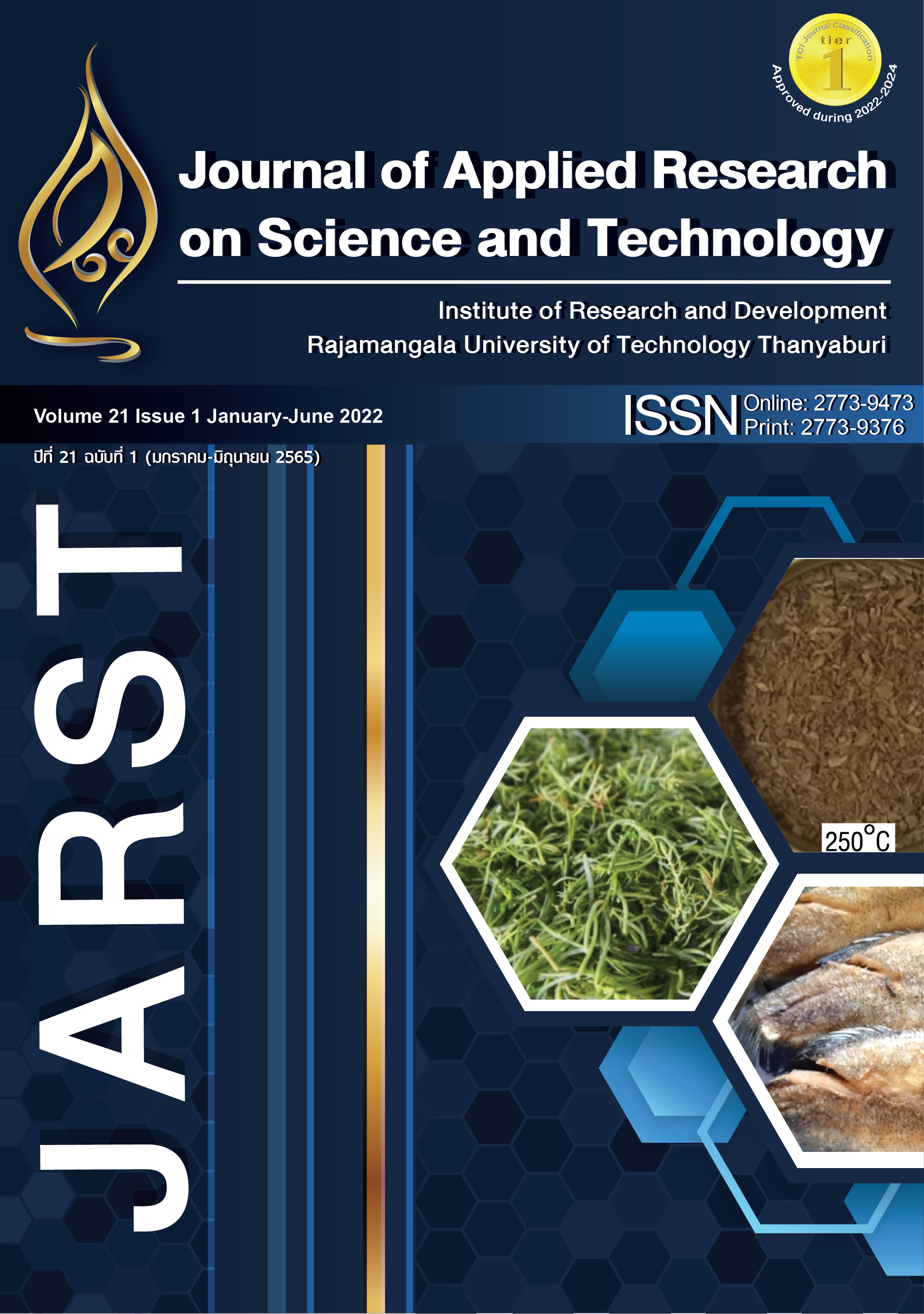A Study of the Filtration Efficiency of the N95 Medical Mask After Sterilization with the Developed Automatic Coronavirus Sterilizer
Main Article Content
Abstract
This research aims to develop an automatic coronavirus sterilizer. A research team which knowledge and experience in the branch of photonics technology for medical, together with a research team of virology jointly research to solve the aforementioned problems. Therefore, the system is designed as automatically sterilization process that is UV-C exposure, hot air dryer, packaging and sealing for the personal individual masks. We have found that the UV-C dose that can kill the amount of 200 microliters of coronavirus PEDV (more than the number of possible natural contamination) on N95 medical mask (model VFLEX 9105) within 1 minute and can kill the same amount of coronavirus faster than 1 minute for higher UV-C intensity. The filtering efficiency of the medical masks which were through our sterilization machine have been sent to tested. It was found that the control mask and used mask that sterilized for 10- and 30-time cycles had no significant different filtration efficiency. This demonstrates that our automated coronavirus sterilizer prototype is not destroyed the filtration efficiency of the tested medical mask so this prototype is many advantages for killing the coronavirus may be on used medical masks and can be reused many times.
Article Details

This work is licensed under a Creative Commons Attribution-NonCommercial-NoDerivatives 4.0 International License.
References
Wolrd Health Organization. Coronavirus disease 2019 (COVID-19) situation report -68 [Internet]. [ cited 2020 Mar 28]. Availability from: https://www.who.int/docs/default-source/coronaviruse/situation-reports/20200328-sitrep-68-covid-19.pdf.
Del Rio C, Malani PN. COVID-19—New insights on a rapidly changing epidemic. JAMA. 2020;323(14):1339-40. doi:10.1001/jama.2020.3072.
World Health Organization. Coronavirus disease (COVID-19) advice for the public: when and how to use masks [Internet]. [ cited 2020 Jun 15]. Availability from: https://www.who.int/emergencies/diseases/novel-coronavirus-2019/advice-for-public/when-and-how-to-use-masks.
Joob B, Wiwanitkit V. COVID-19 in medical personnel: observation from Thailand. J Hosp Infect. 2020;104(4):453. https://doi: 10.1016/j.jhin. 2020.02.016.
Moore G, Ali S, Cloutman-Green EA, Bradley CR, Wilkinson MAC, Hartley JC, et al. Use of UV-C radiation to disinfect non-critical patient care items: a laboratory assessment of the Nanoclave Cabinet. BMC Infect Dis. 2012;12:174. https://doi:10.1186/1471-2334-12-174.
Beck SE, Hull NM, Poepping C, Linden KG. Wavelength-Dependent damage to adenoviral proteins across the germicidal UV spectrum. Environ Sci Technol. 2018;52(1):223-9. https://doi.org/10.1021/acs.est.7b04602.
Woo H, Beck SE, Boczek LA, Carlson KM, Brinkman NE, Linden KG, et al. Efficacy of inactivation of human enteroviruses by dual-wavelength germicidal ultraviolet (UV-C) light emitting diodes (LEDs). Water (Basel). 2019;11(6):1131. https://doi.org/10.3390/w11061131.


